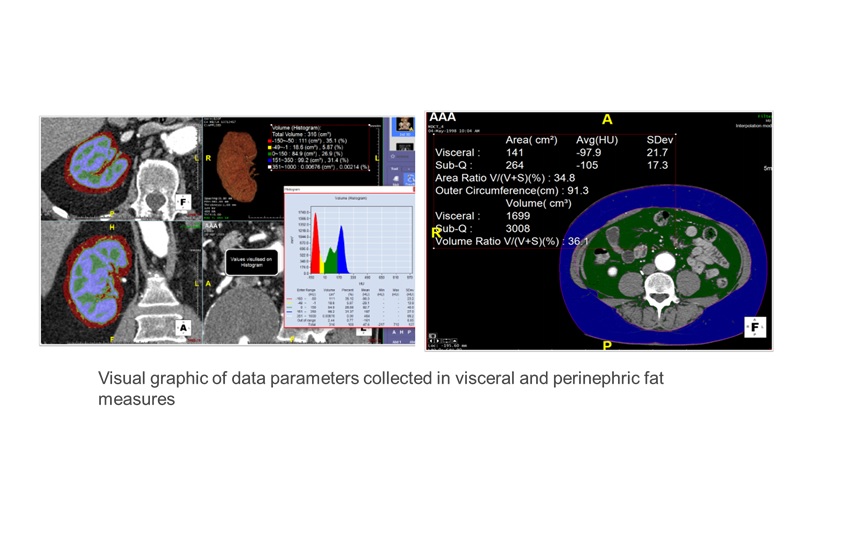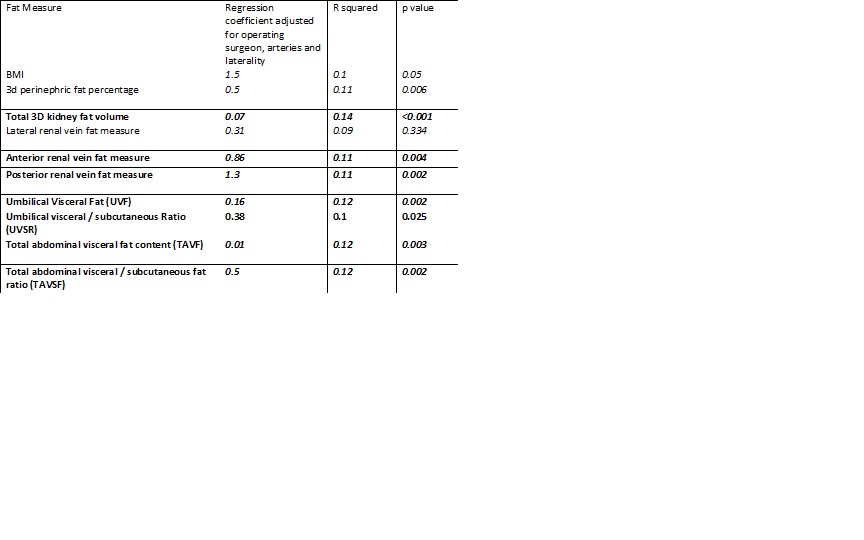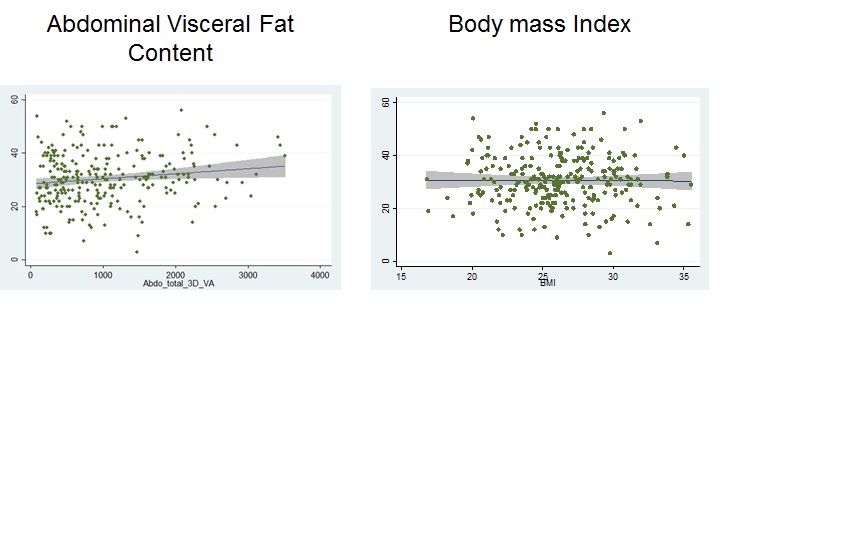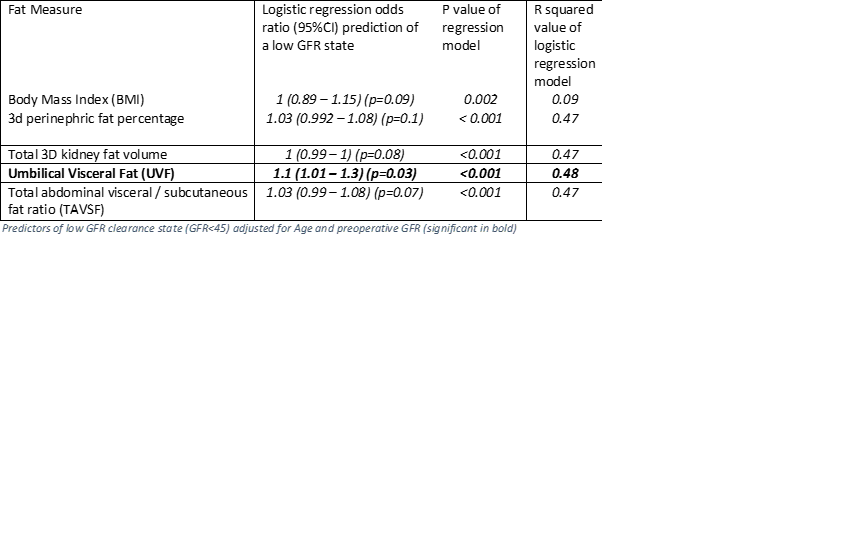CT Based Visceral Fat Measures Predict Complexity, Complications and Low Clearance in Living Donor Nephrectomy
Zubir Ahmed1, Daniel Osei-Bordom1, Ben Ridley1, Josh Brown1, Raphael Uwechue1, Pankaj Chandak1, Nicos Kessaris1, Narayan Karunanithy1, Nizam Mamode1.
1Abdominal Transplant Unit, Guy's Hospital, London, United Kingdom
Donor nephrectomy operative complexity and postoperative outcomes remain subject to large degrees of unexplained heterogeneity.
This study assess the clinical correlation of CT based intrabdominal and perinephric fat content using 3 different fat calculation methods (1. % visceral fat at the umbilicus, 2. 3D visceral fat content of the whole abdomen and donated kidney and 3. perinephric fat in anterior, posterior, medial and lateral planes at the level of the renal vein) producing 15 separate data points for each donor. The study was performed in a single centre in 500 patients undergoing hand assisted laparoscopic donor nephrectomy between 2005 - 2014 who had CT angiography performed as part of their routine preoperative work up.
Analysis of each fat measure was carried out with spearman correlations, ttest and ANOVA. Multivariate regression models of the predictors of a low post donation clearance state at one year (GFR <45mls/min) and operating time (as a marker of operative complexity) were also developed.
The mean age of the cohort was 44.1 yrs, 17% were obese and 51% female. Abdominal visceral fat content (r2=0.12 coefficient 0.36 p=0.001) and perinephric fat content (r2=0.14, coefficient 0.07 p<0.001) were strong independent predictors of operating time when adjusted for operating surgeon, arterial multiplicity.
Total abdominal visceral fat measures were also greater in those developing postoperative infection (1692cm2 v 1489cm2 p=0.04). Greater perinephric fat content was associated with incisional hernia development (235cm2 v 163cm2 p=0.04).
The mean reduction in glomerular filtration rate (GFR) post renal donation at one year was 30.5mls/min (SD 9.6). Spearman rank correlation statistics demonstrated significant positive associations between GFR reduction at one year post donation and visceral fat content at the umbilicus (spearman rho=0.14, p=0.03) and total abdominal visceral fat content (spearman rho 0.13, p=0.04). There was no association with BMI (spearman rho 0.02, p=0.69). Similarly subcutaneous and perinephric fat measures demonstrated no relationship. 7% of the kidney donors studied had a one year post donation "low" GFR clearance state (<45mls/min). A logistic regression model adjusted for preoperative GFR and age demonstrated abdominal visceral fat content measured at the umbilicus to be an independent predictor of a low GFR state at one year (OR 1.1 p=0.001, LR chi2 = 68, p=0.001 r2 = 0.48).
7% of the kidney donors studied had a one year post donation "low" GFR clearance state (<45mls/min). A logistic regression model adjusted for preoperative GFR and age demonstrated abdominal visceral fat content measured at the umbilicus to be an independent predictor of a low GFR state at one year (OR 1.1 p=0.001, LR chi2 = 68, p=0.001 r2 = 0.48).
|In this the largest CT based anthropometric study of kidney donors to date; visceral and perinephric CT based fat measurements appear to be superior predictors of short and long term outcomes (when compared to BMI). In marginal cases of donation particulary where there is concern over residual renal function post donation, these measures may facilitate perioperative decision making.
